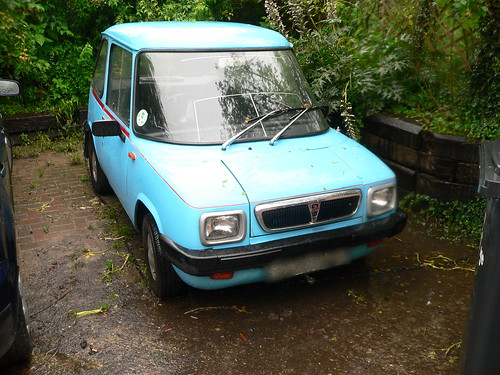Ten years ago, we were still in the last great EV revolution. The EV1 was still on the road (although GM had by this time decided to no-longer make them), and the general public were getting used to seeing funky charging stations. At least, they were used to that in the select areas of the US where electric vehicles were being used.
Europe too, was undergoing something of a mini-revolution. The french conglomeration of Citroen, Peugeot and Renault were making commercially available electric cars and vans. A few years later, just like the EV1, RAV4EV and Ford Th!nk to name but a few, these vehicles disappeared from the market.
Here we are, in 2009, with lots of exciting developments in the world of plug in vehicles. As someone heavily involved with plug in vehicles it feels to me as if we’re just about to enter a truly golden age of the electric vehicle. But we’ve seen this kind of activity ten years ago. How do we know it’s not going to end in tears again?

More after the jump.
EVcast 236
It’s official. The iMiev is on it’s way.
EVcast 236
It’s official. The iMiev is on it’s way.
Playing the mileage game.
Former CMO of Tesla Motors Darryl Siry, (now a Senior Analysist of Cleanteach at Peppercom) has called for auto makers to be more clear about the abilities and range of their electric and plug-in vehicles. It’s a subject I‘ve touched on in the past, but felt it worth revisiting considering the excellent article.
It’s a common problem with all EVs on the market today. Like their petrol-powered counterparts, sales teams just can’t help themselves when it comes to providing optimistic range figures for their vehicles. It’s common practice, but as Darryl eloquently argues, it could jeopardize the very heart of the EV industry before it’s fully got off the ground.
The public don’t like being made to feel that they are being lied to. And while, on a purely technical level, no car company is lying when it claims a car can do 56 mpg on it’s urban cycle, or that the range of that funky new EV is a salivating 200 miles. But at the same time the auto industry doesn’t like to tell you the full story.

More after the jump.
Drive up. Switch out. Drive on. Is it that simple?
Project Better Place have just released a video of a Nissan Crossover SUV EV at a Yokohama facility, switching out a discharged high-power EV battery pack for a fully-charged replacement. The EV then drives off on it’s merry way. It takes less than two minutes to complete. It’s an impressive video.
But is the future of electric vehicles dependent on fast battery switching, or is it an unnecessary complexity?
Let’s look at the things which we’d need to satisfy in order for a high-power battery switch out station to become a reality.
More after the jump.
Drive up. Switch out. Drive on. Is it that simple?
Project Better Place have just released a video of a Nissan Crossover SUV EV at a Yokohama facility, switching out a discharged high-power EV battery pack for a fully-charged replacement. The EV then drives off on it’s merry way. It takes less than two minutes to complete. It’s an impressive video.
[youtube http://www.youtube.com/watch?v=5b0T5NUHyxs&hl=en&fs=1]
But is the future of electric vehicles dependent on fast battery switching, or is it an unnecessary complexity?
Let’s look at the things which we’d need to satisfy in order for a high-power battery switch out station to become a reality.
More after the jump.